Back in my August 11, 2017 column – Could I Be Any More Worried For Australia – I expressed my negative views on the future of the country given what I was seeing in the residential property market, prestige car sales, wages growth, retail sales and specifically the impact this was having on ASX-listed companies exposed to these bearish trends. The Australian dollar was also seen at risk because of it viewed as a ‘proxy’ for everything that could go wrong domestically. At that time the Australian dollar was hovering around the USD0.80 mark and has since dropped to USD0.735
In that August 2017 column I showed the first of my five most important charts for the Australia dollar and that is building supply. Below I show the same chart again and the most obvious point is the ludicrous increase in multi-storey apartments. As I noted then and I repeat again especially since we have begun to see its impact on prices, developers and auction clearance rates– nothing sees a supply response like this without a huge negative impact on the industry. Think iron ore, oil, crypto, tech boom, anything which goes vertical will eventually collapse irrespective of how good the so-called fundamentals are.
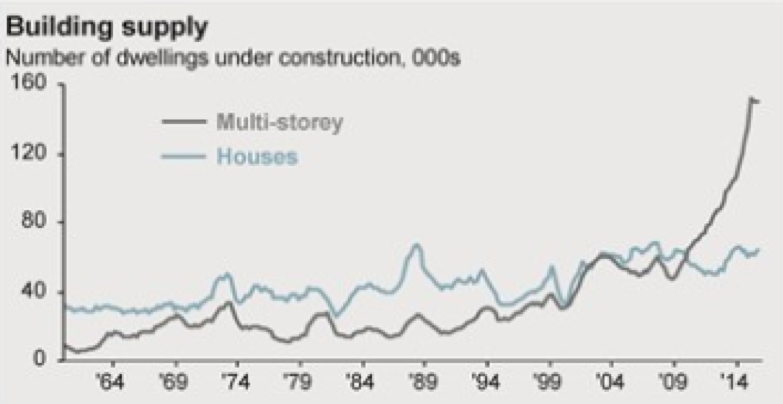
The flow on effect of this huge supply/price drop is the impact this has on home owners’ balance sheets and how this then impacts their spending habits and ability to service debts on properties that have dropped substantially in value.
It’s no surprise then, that with these risks bond yields have continued to remain low in Australia despite US bond yields continuing to rise. For the first time since the Australian dollar was floated, the US 10-year bond yield is greater than the Australian 10-year bond yield. One of the key factors that has always been a given is a positive interest rate return for holding Australian dollars. This has now evaporated. And if you were not sure how much this interest rate differential impacts the local currency look at chart number 2 below (monthly basis back to 1998). The interest rate differential is shown in blue and the Australian dollar in brown. Moves in the interest rate differential govern the trend in the Australian dollar and the latest inversion is a significant concern.
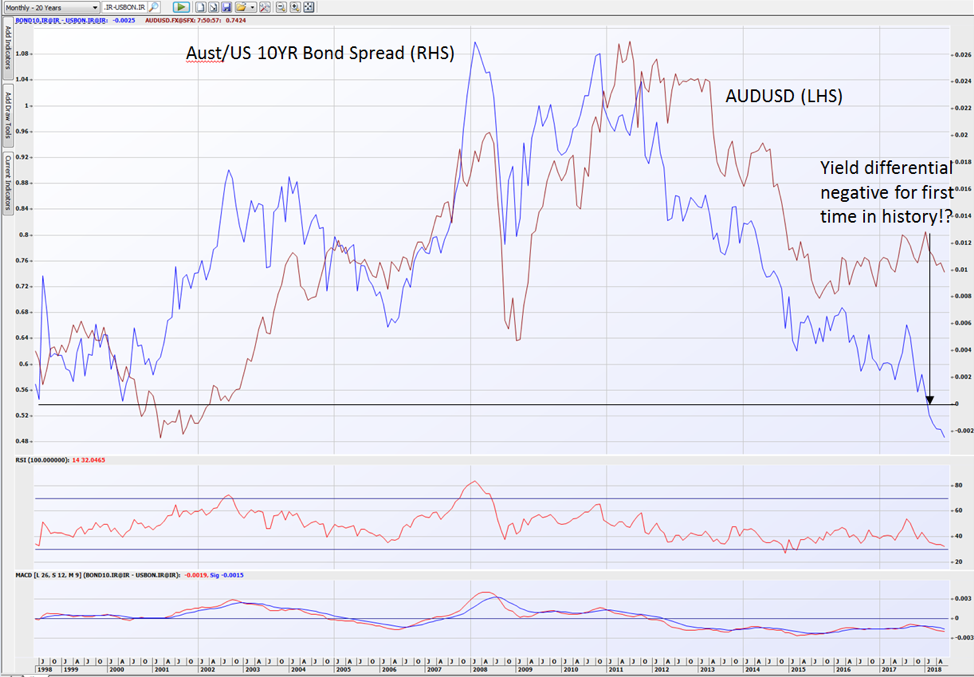
The interest rate differential between the Australian and US 5-year bond yields in chart 3 below (monthly basis) has inverted (US>Australia) for only the second time. The last time occurred in 2000 and as a result the Australian dollar fell to USD0.48 in 2001. Now, not only is the yield differential inverted again but this time it is at a significantly wider inversion than in 2000/2001 – the widest in history. This is the longest period of time that inversion has persisted and I see no signs of this reversing anytime soon. In fact I believe it will continue to widen (as the Fed raises rates another two times this year and the RBA will need to about face on their view of the next move in rates being up), placing further significant downward pressure on the local currency.
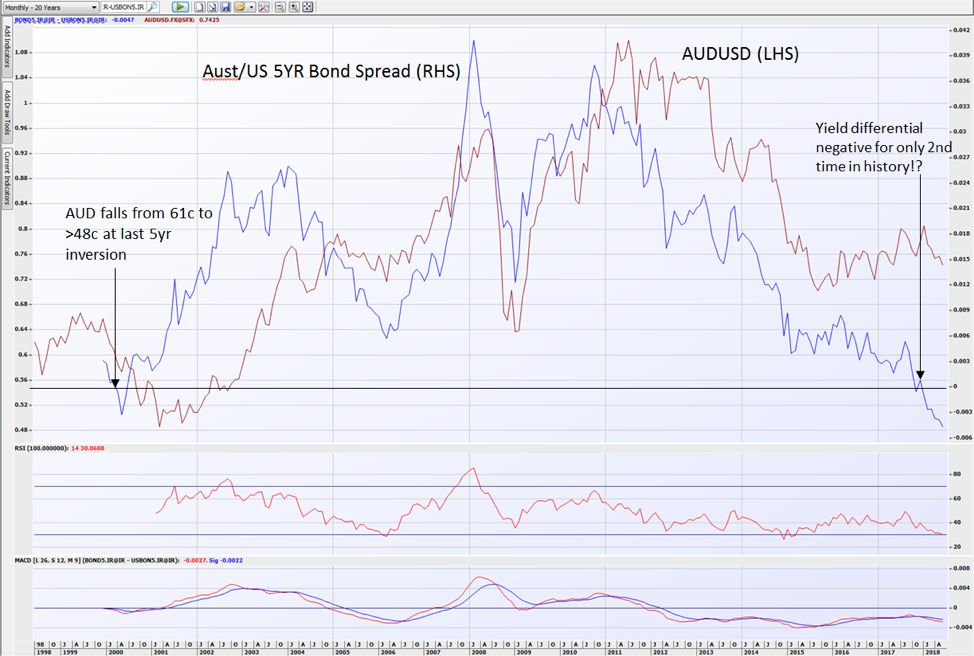
Finally let’s look at some charts on Australian dollar. Chart 4 is a monthly chart and the most prominent feature here is the 17-year trendline support that is on the verge of breaking. This is a huge level and I believe is at real risk of being breached leading to a serious downward slide towards the GFC lows of USD0.60. All the technical indicators point to further downside without a single technical factor that suggests the Australian dollar’s fortunes are going to reverse.
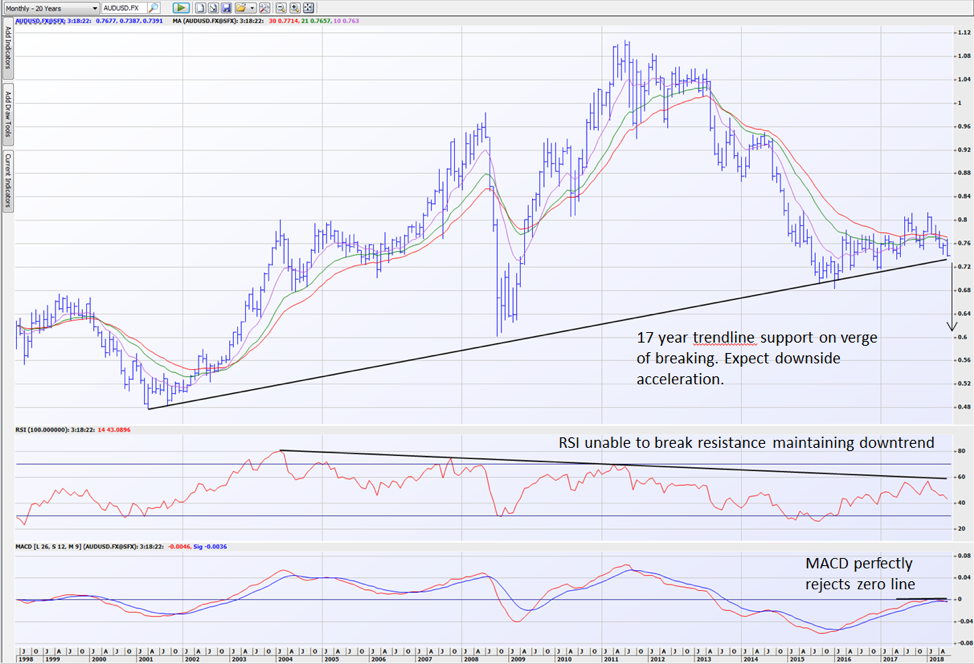
Finally let’s look at the Australian dollar on a weekly timeframe to understand its shorter-term direction. Here we see the channel within which the currency had traded in over the past two years being broken to the downside. This is coinciding with a breach of the RSI uptrends that have in 2013 and 2014 led to major depreciations. Again there are no technical factors here that suggest this is a buy. Moreover, when we look closely we are now seeing any rebounds in the Australian dollar being capped by the 30 week exponential moving averages – which regular readers will know – is a system I use regularly to identify strength of trends, place stop losses and determine the precise points to enter/exit positions. The fact that rallies are peaking right on this level infers the downtrend has begun and resistance is being respected.
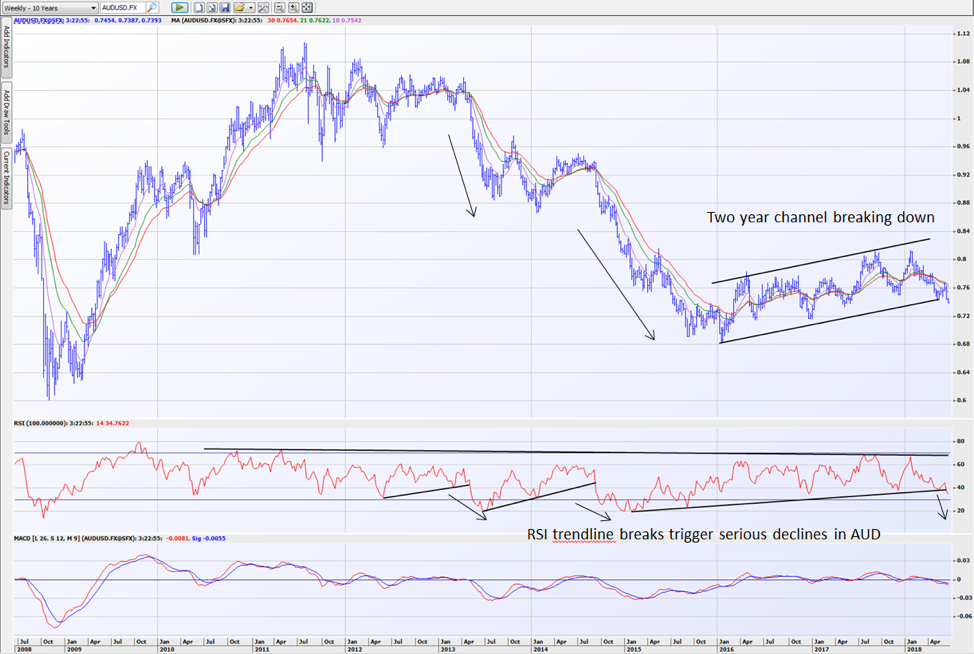
Let me make some final points. The world has been waiting to short the Australian property market and the dire circumstances that will result to our financial system and economic growth as a result. We have witnessed the early stages of this and global macro hedge funds will use the Australian dollar as proxy for this trade. The Canadian and New Zealand dollars also look similar to the Australian dollar and no prizes for guessing they both too have some of the most over-priced property markets in the world.
Taking into account everything I have been stating for the past 12 months is unfolding I cannot believe how the RBA can still believe the next move in rates will be up? And if they do stupidly raise rates, I ask what will that do to the fragile economy, consumers and property? It will most certainly accelerate the problem.
Now think of one reason why the Australian dollar should go up? Nope I can’t think of one either.







